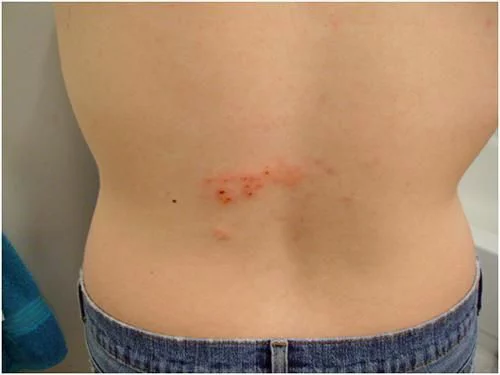Fungal diseases can affect anyone. Mild fungal skin diseases can look like a rash and are very common.
Fungal diseases are often caused by fungi that are common in the environment. Fungi live in air, in soil, on plants, and in water. Some live in the human body. Most fungi are not dangerous, but some types can be harmful to health.
Some fungi reproduce through tiny spores in the air. You can inhale the spores or they can land on you. As a result, fungal infections often start in the lungs or on the skin. You are more likely to get a fungal infection if you have a weakened immune system or take antibiotics.

What are fungal infections?
1. Fungal infections on the surface of your body
Many types of fungal germs (fungi) live harmlessly in the soil, on food, on our skin and in other places in the environment. However, some types of fungi can thrive and multiply on the surface of the body, to cause infection of the skin, nails, mouth or vagina.
The most common fungi to cause skin infections are the tinea group of fungi. For example, athlete’s foot (tinea pedis) is a common fungal infection of the toes and feet. Tinea infection also causes ringworm (tinea corporis) and ringworm of the scalp (tinea capitis). It also causes many fungal nail infections.
A common fungal infection of the mouth and of the vagina is called thrush. This is caused by an overgrowth of candida which is a yeast (a type of fungus). Small numbers of candida commonly live harmlessly on the skin. However, certain conditions can cause candida to multiply and cause infection. Candida is also sometimes the cause of some fungal nail infections.
2. Fungal infections within the body
Fungal infections of the skin, nails, vagina and mouth are quite common. They are rarely serious and don’t usually spread deeper into the body. However, fungal infections of the heart, lung, brain and other organs sometimes do occur. These internal fungal infections can be serious and, sometimes, life-threatening.
Various types of fungus can cause internal infections. For example:
- Aspergillosis most commonly affects the lungs, but sometimes infects other organs.
- Cryptococcosis is uncommon, but can cause meningitis.
- Histoplasmosis is rare, but can cause serious infections of the lung and other organs.
- You are more at risk of developing an internal fungal infection if your immune system does not work properly. For example, if you are taking chemotherapy, if you have HIV/AIDS, etc.
Fungal treatment
There are several different fungal treatment preparations that are used to treat various fungal infections. They come as creams, sprays, solutions, shampoos, tablets designed to go into the vagina (pessaries), medicines to take by mouth, and injections.
The length of treatment depends on what type of fungal infection you have, how severe it is and if you have any other health problems. Some courses of treatment can be as short as a few days (for example, for vaginal thrush). Other courses can be as long as eight weeks (for example, for ringworm infection of the scalp). Most work by damaging the cell wall of the fungus, which causes the fungal cell to die.
How to treat fungal infections
1. Antifungal creams, liquids or sprays (topical antifungals)
These are used to treat fungal infections of the skin, scalp and nails. They include clotrimazole, econazole, ketoconazole, miconazole, tioconazole, terbinafine, andamorolfine. They come in various different brand names.
Sometimes an anti-fungal cream is combined with other creams when two actions are required. For example, an anti-fungal cream is often combined with a mild steroid cream, such as hydrocortisone, to treat certain rashes. The anti-fungal cream clears the infection, and the mild steroid cream reduces the inflammation caused by the infection.
2. Antifungal shampoo
A shampoo which contains ketoconazole is sometimes used to help treat scalp fungal infections and certain skin conditions.
3. Antifungal pessaries
Pessaries are tablets which are designed to be put into the vagina. Some anti-fungal medicines are used as pessaries to treat vaginal thrush, particularly clotrimazole, econazole, miconazole, and fenticonazole
4. Antifungal medicines taken by mouth
There are various types such as:
- Miconazole is available as an oral geland nystatin as a liquid. They are applied to the mouth. They are used to treat thrush (candidal infection) of the mouth and throat.
- Terbinafine, itraconazole, fluconazole, posaconazole, and voriconazole are available as tablets, which are absorbed into the body. They are used to treat various fungal infections. The one chosen depends on what type of infection you have. For example:
- Terbinafine is commonly used to treat nail infections which are usually caused by a tinea type of fungus.
- Fluconazole is commonly used to treat vaginal thrush, as an alternative to using antifungal cream. It is also used to treat and prevent certain fungal infections within the body.
5. Antifungal injections
These may be used if you have a serious fungal infection within the body. Amphotericin, flucytosine, itraconazole, voriconazole, anidulafungin, caspofungin, and micafungin are medicines that are sometimes used in this way. The one chosen depends on the type of fungus causing the infection.
Dr Tan Hiok Hee
Dermatology (Skin)
Thomson Specialist Skin Centre (Novena Specialist Center)
English, Mandarin

